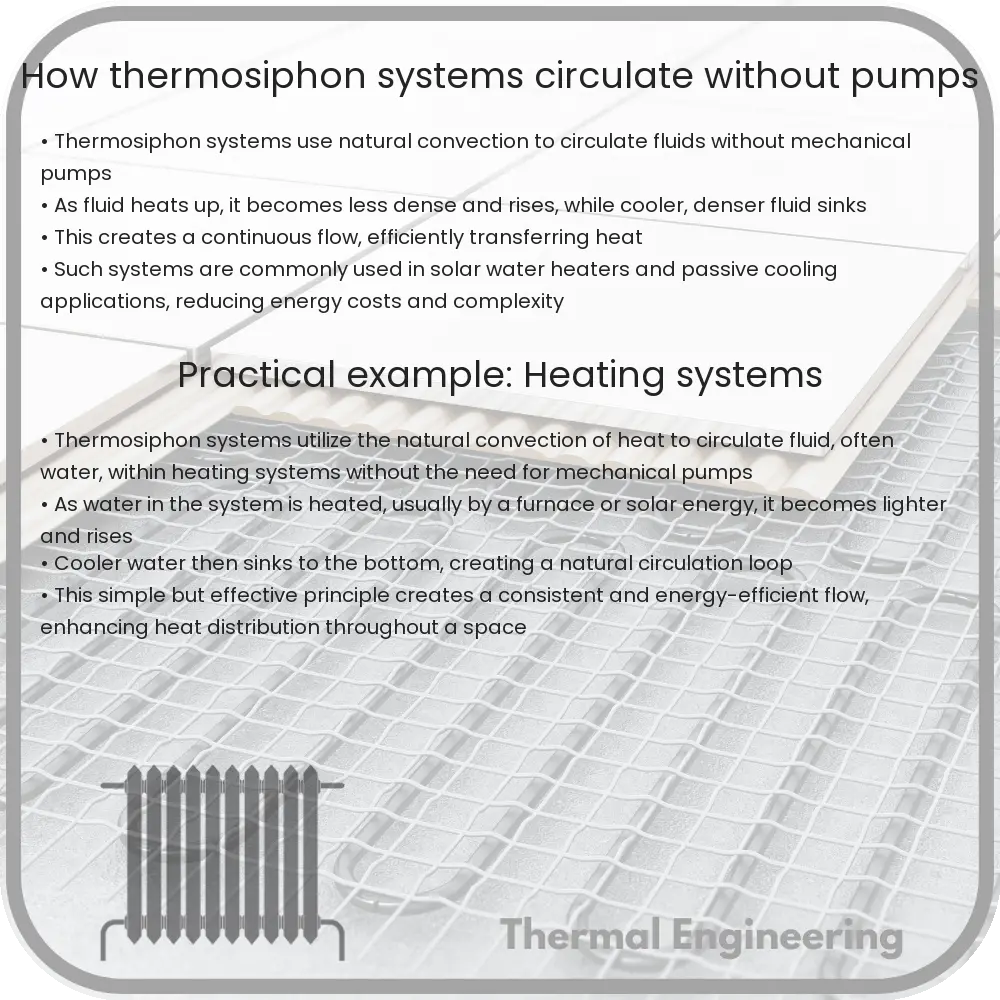Learn how thermosiphon systems use thermal physics and natural convection to circulate fluids and transfer heat without mechanical pumps in various applications.

Understanding Thermosiphon Systems: Circulation Without Pumps
Thermosiphon systems are a fascinating application of thermal physics and fluid dynamics that allow liquid circulation without the need for mechanical pumps. This passive heat exchange method is used in a variety of applications, from residential water heaters to large-scale industrial processes. Understanding how these systems work provides a great window into practical engineering principles applied in everyday technology.
Principles of Operation
The operation of a thermosiphon system is based on the principle of natural convection, which occurs when a fluid such as water or oil heats up, becomes less dense, and rises because of the gravitational force acting on the density differences in the fluid. As the fluid cools down, it becomes denser and sinks naturally, creating a continuous flow cycle that can effectively transfer heat from one place to another without the need for a mechanical pump.
The Components of a Thermosiphon System
- Heat Source: This is where the fluid in the system is heated, causing it to expand and reduce in density.
- Riser Tube: As the fluid warms up, it rises through this vertical tube due to its reduced density compared to the surrounding cooler fluid.
- Heat Exchanger/Radiator: At the top of the cycle, the fluid releases its heat. After releasing the heat, the fluid cools, increasing in density.
- Downcomer Tube: The cooled fluid returns to the lower part of the system through this tube, completing the circulation loop.
Thermodynamics Behind Thermosiphon Systems
Understanding the thermodynamics of thermosiphon systems involves examining the heat transfer and fluid flow within the system. The driving force behind the fluid flow is the density difference induced by temperature changes, governed by the equation:
Δρ = ρ0(1 – βΔT)
where:
- Δρ is the change in density
- ρ0 is the initial density of the fluid
- β is the volumetric temperature expansion coefficient of the fluid
- ΔT is the temperature difference
This equation highlights how the change in density varies inversely with the change in temperature, facilitating natural circulation as the warmer, less dense fluid rises and the cooler, denser fluid sinks.
Applications of Thermosiphon Systems
- Solar Water Heaters: One of the most common uses of thermosiphon systems is in solar water heating, where solar energy is used to heat water without electricity.
- Radiant Floor Heating: These systems can also be applied in radiant floor heating, where the circulated hot water warms the floor surface evenly.
- Industrial Cooling: In industries, thermosiphon systems are used for cooling purposes, such as in the cooling of power station transformers.
Advantages of Using Thermosiphon Systems
Thermosiphon systems are favored in many applications due to their simplicity and efficiency. They are cost-effective, as they do not require electric pumps or complex mechanical parts. Moreover, these systems are low maintenance and can operate in power-outage scenarios, providing an environmentally friendly solution that utilizes natural convection principles.
In summary, thermosiphon systems exemplify how basic physics principles can be ingeniously applied in practical scenarios to achieve efficient and sustainable engineering solutions. By leveraging the natural propensity of heated fluids to rise, these systems facilitate effective heat transfer without the need for mechanical aids, highlighting the elegance and efficiency of passive engineering designs.